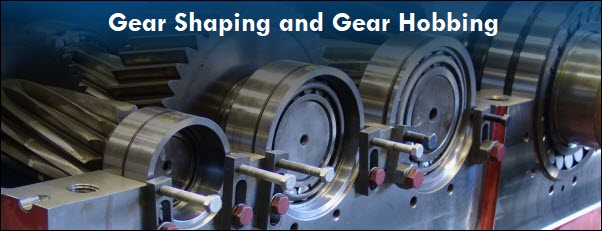Just like any sheet metal is fabricated to form the right mold, shape, size, and so on, gear manufacturing has certain machining processes such as shaping, hobbing, and so on. Gears are required to be set in motion, rotate, and raise the speed of any machine, industrial equipment, automobiles, and so on. So, how are these gears made? CNC machining methods are widely applied in the last stages of gear manufacturing, and milling, casting, forging, and so on are some of the methods used. Gear shaping and hobbing are also two important processes of gear manufacturing. The process to be used depends on gear specifications such as the shape and size required, among other parameters. This post discusses and compares the two methods- gear shaping and gear hobbing.

Shaping is almost a subset of the milling process. This process helps form the gear teeth with the help of a rotating cutter tool, wherein its axis is parallel to that of the gear. The rotating speed and velocity of the cutter must match with the gear blank for teeth formation. A train of gears helps achieve the relative motion between the cutter shaft and the gear blank. Here the cutting may happen either at a downward or upward stroke. This is suitable for the shaping of gears closely located toward the flanges or other obtrusive surfaces. This is a widely used process for making internal and external gears. High dimensional accuracy is one of the major benefits of the shaping process apart from its cost-effective tools. After this process, surface finishing may be required depending upon the application.
Hobbing is a method also used for teeth formation in gear manufacturing. This teeth formation is done on the gear blank with the help of a hob on CNC gear hobbing machines. This machine is a type of special milling equipment. It could be an index hob or a master hob. There are various other types of hobs such as spline, spur, helical, chamfer, roller chain sprocket, straight side, and so on. The gear blank and the hob rotate simultaneously and produce continuous cuts on the blank gear which gives the required depth to the teeth. As mentioned above, the machining processes chosen are largely based on the shape and size of the gear. Likewise, hobbing is applicable for gear shapes such as helical, straight bevel, crowned, worm, face, and chamfering. Also, it is suitable for medium to high production volume. This cost-effective yet efficient process is useful to make several parts irrespective of the quantity.
If you notice, the difference between these two methods is really in the way the gear teeth are formed. If you are looking for or standard or customized gearboxes of a specific brand for automotive or any other application, ensure you approach a supplier who is EASA certified. Also, ensure they can understand your requirements and customize accordingly. Motor & Gear Engineering, Inc. is one of the leading players offering repair and rebuilding services for several brands of gearboxes. They have a market presence of more than 45 years and hence have gained expertise in the gearbox segment. The company offers custom machining capabilities and offers reliable solutions to players in automotive, hydraulics, and related segments.